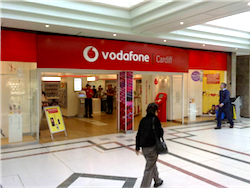Vodafone UK’s CEO is aiming for LTE consistency, rather than a “thin and flimsy” 4G network, as it rolls out to around 50 percent of the country’s population.
Jeroen Hoencamp said many customers do not care what 4G is, claiming what was more important to them was consistency of coverage.
In a blog on the Vodafone website, he said: “It’s not about who’s got the most coverage. It’s more about having the strongest signal. We’d love to expand the network faster, but it’s about doing it right first time; I’d rather do it at the pace we’re doing and get it right, than try to go faster and build a thin and flimsy network.
“You can have a few sites here and there, but that would give you really patchy signal. We only turn 4G on when we have built or updated enough sites.”
In particular, Hoencamp claimed a focus on low band spectrum set the operator apart.
He said: “One of the things that makes us different from others is that we have our ‘low band spectrum’. What that means is that our 4G is on a lower frequency, which travels further and deeper indoors. Forget all the technicalities, though: all it means is that we can offer great indoor coverage, and that’s important because the bulk of mobile activity actually takes place indoors – whether people are at work and at home.”
However, it got 2x10MHz of 800MHz spectrum in the 2013 spectrum auction, the same amount as rival O2. EE and Three bought 2x5MHz of 800MHz.
Vodafone came bottom of a report ranking the UK’s mobile networks last summer and is trailing market leader EE when it comes to 4G coverage. EE offers LTE to more than three quarters of the UK. According to figures from O2 dating back to August, more than 45 percent of the population can access LTE.
Vodafone has concentrated on content offerings to promote its LTE service, signing deals with Netflix and Sky Sports. Hoencamp said content was a better strategy than racing to offer the highest download speeds.
He commented: “We could build a network just to achieve massive speeds but the reality is that you don’t currently need anything beyond 20Mbps on a mobile device. Even for streaming video you only need a couple of megabits per second, so we think less about absolute speed and more about using that bandwidth to enable more customers to enjoy great content on the move, even in the busiest places and at the busiest times.”
In October, Vodafone began testing LTE-A in three cities across the United Kingdom. London, Birmingham and Manchester were the first cities to get the technology, which Vodafone said would be used to improve indoor coverage.
During the summer last year, the operator also tested VoLTE although it was cagey about when it would be launched commercially.
Read more:
1800MHZ dominated LTE landscape in 2014, with surge in LTE-A
Ericsson turns to unlicenced spectrum to boost indoor data speeds


